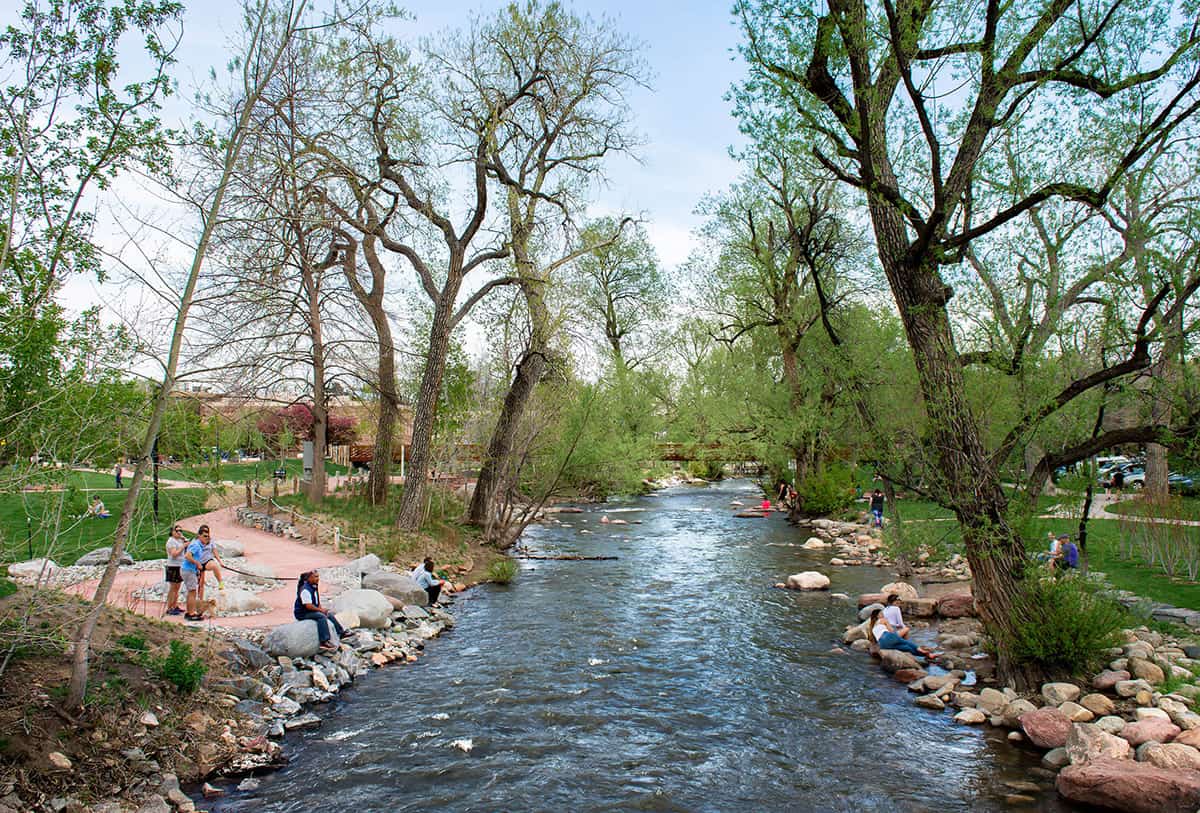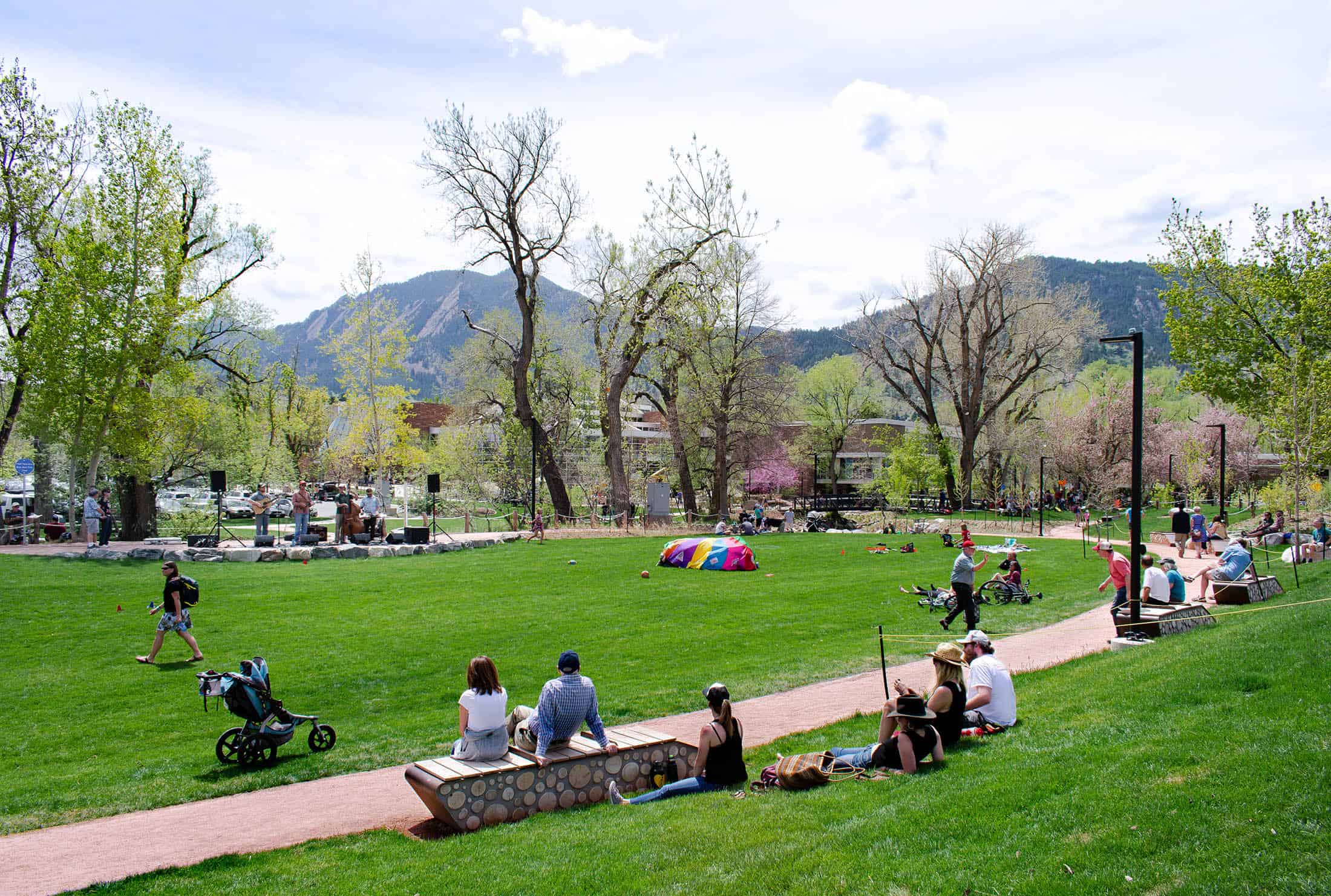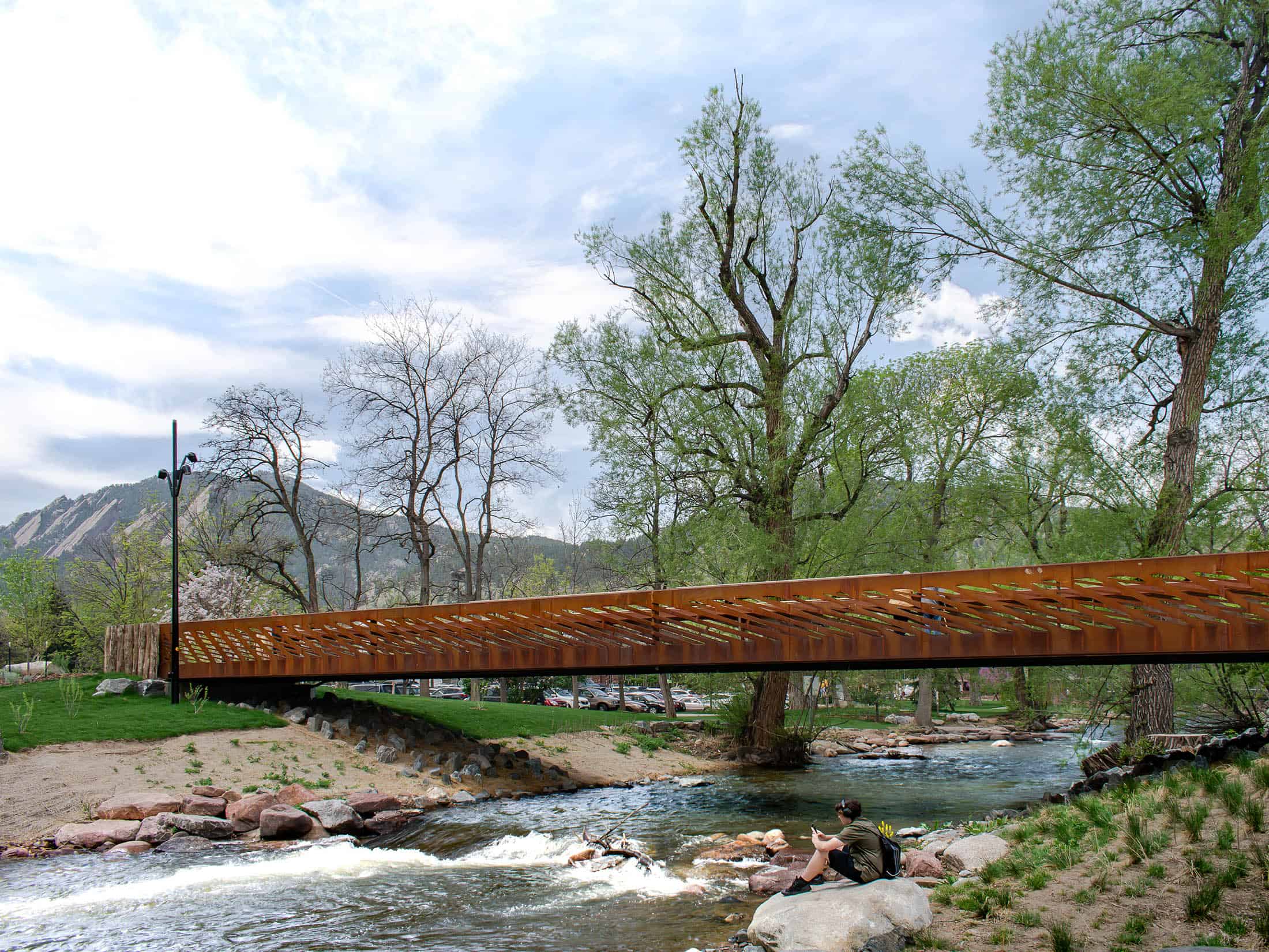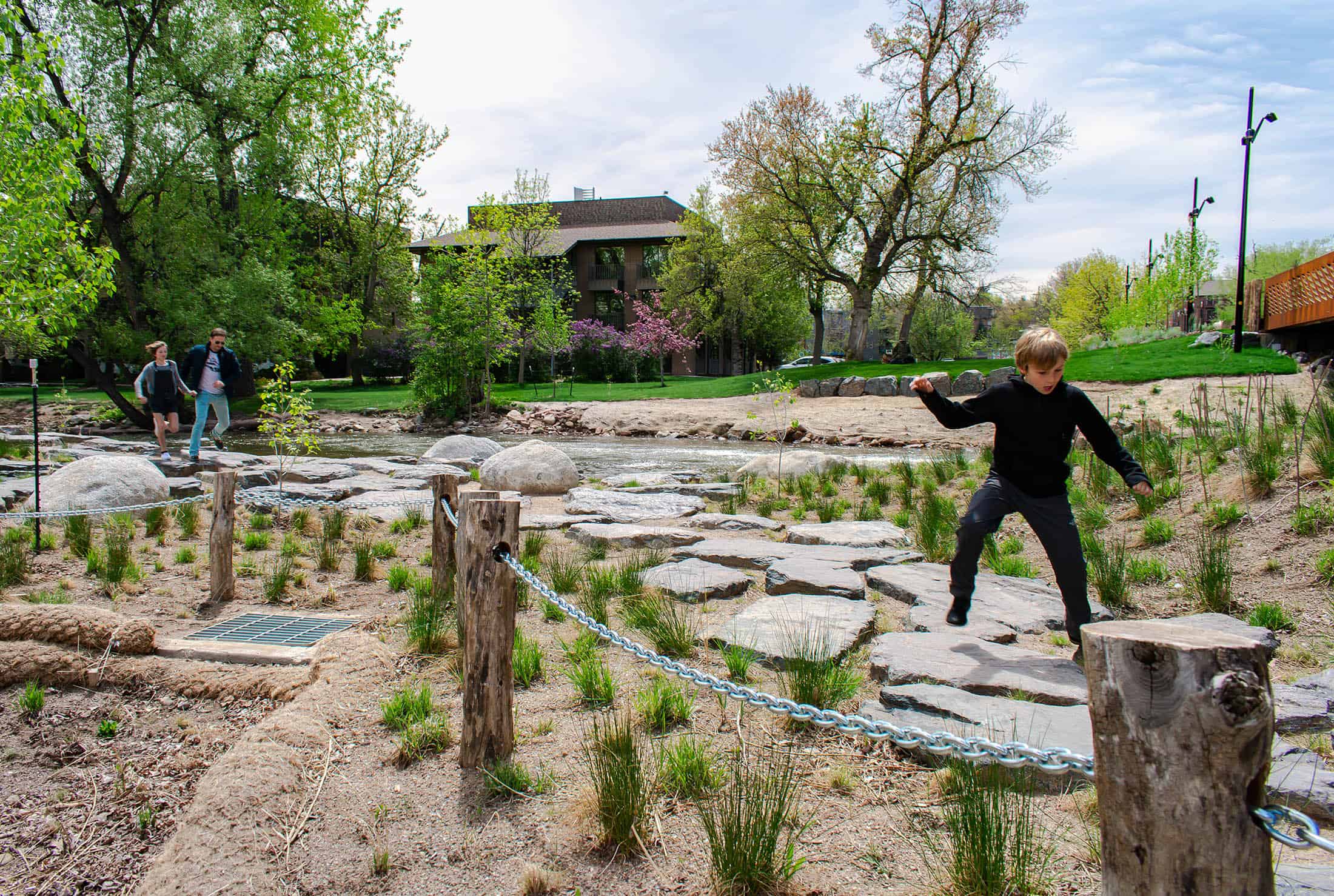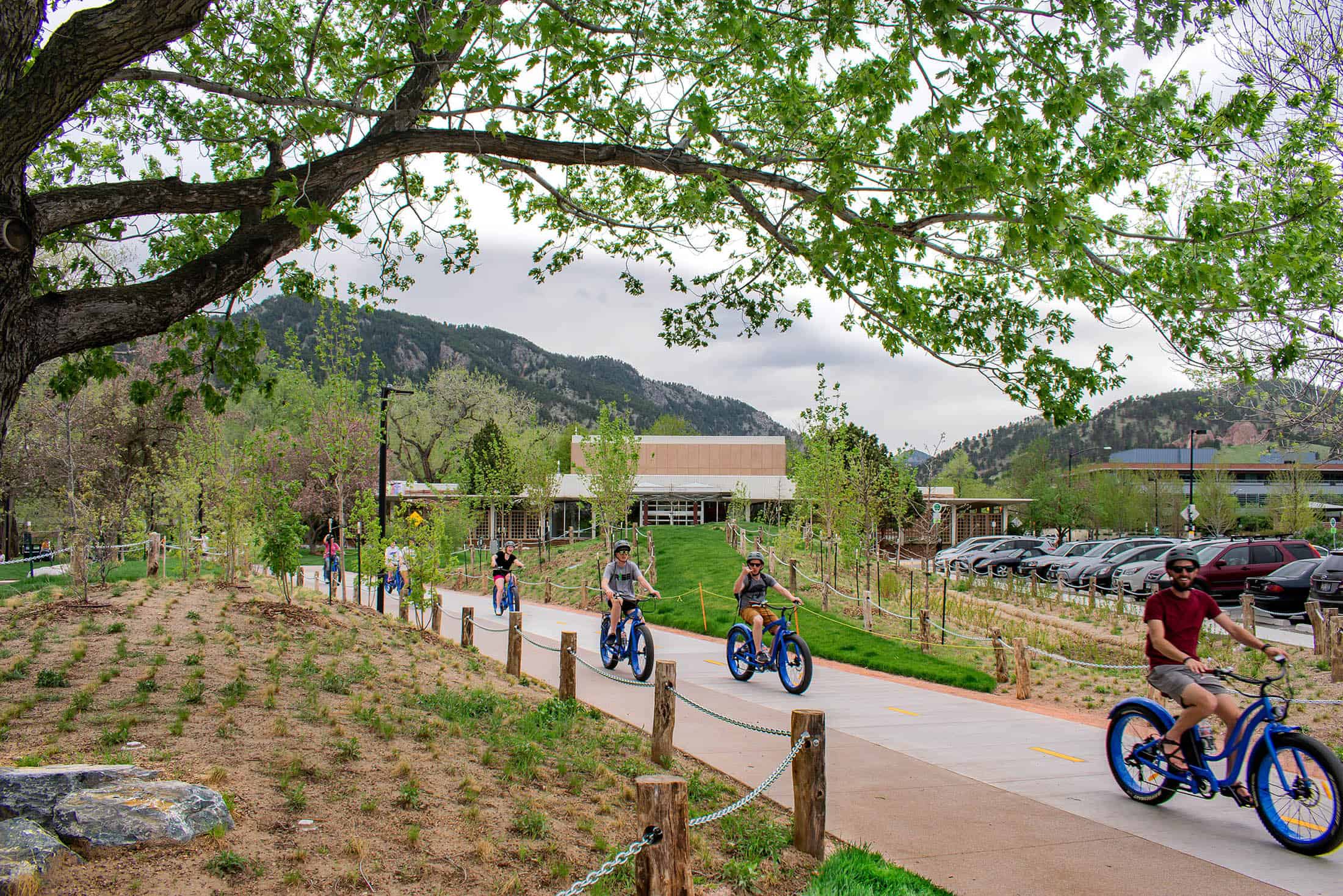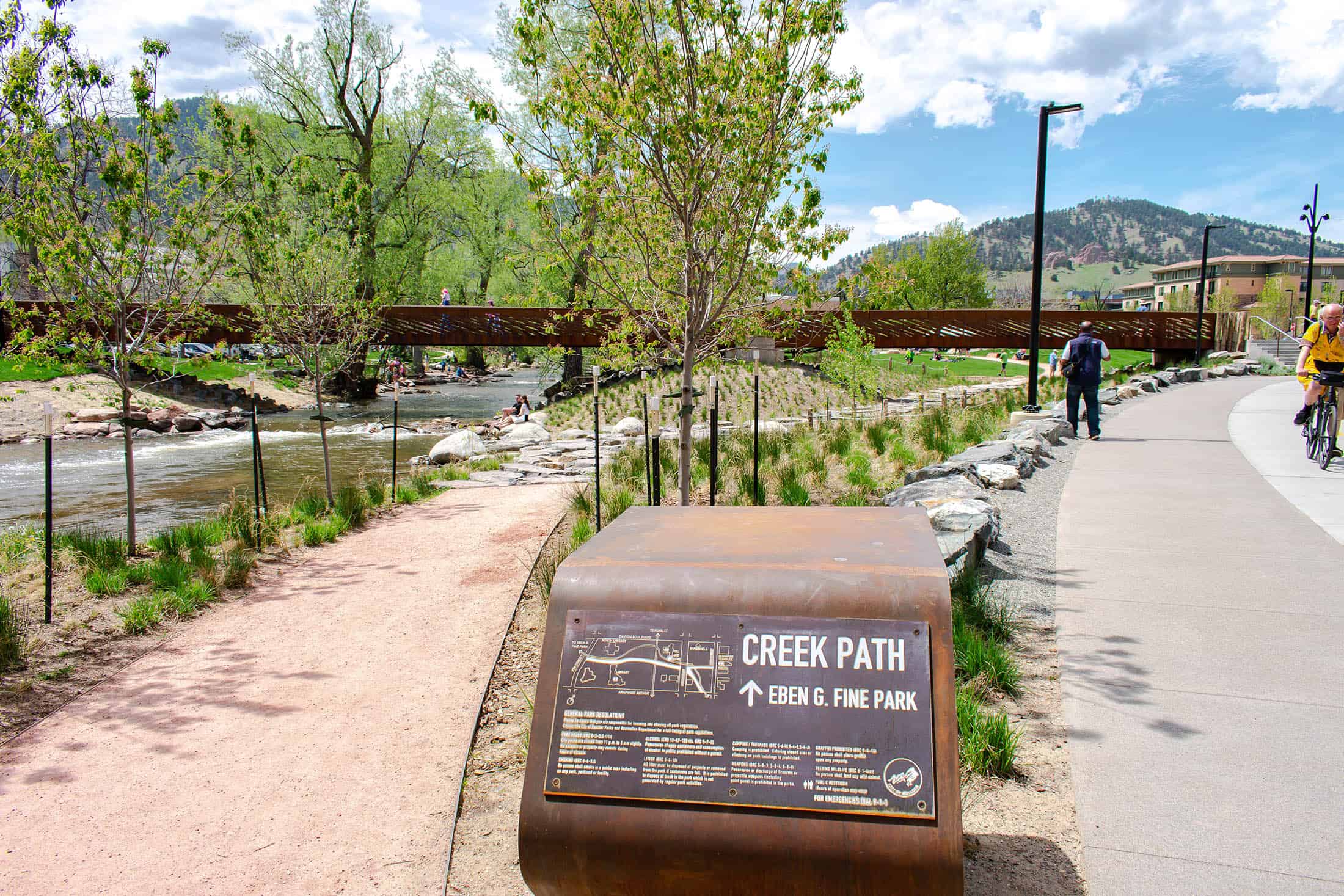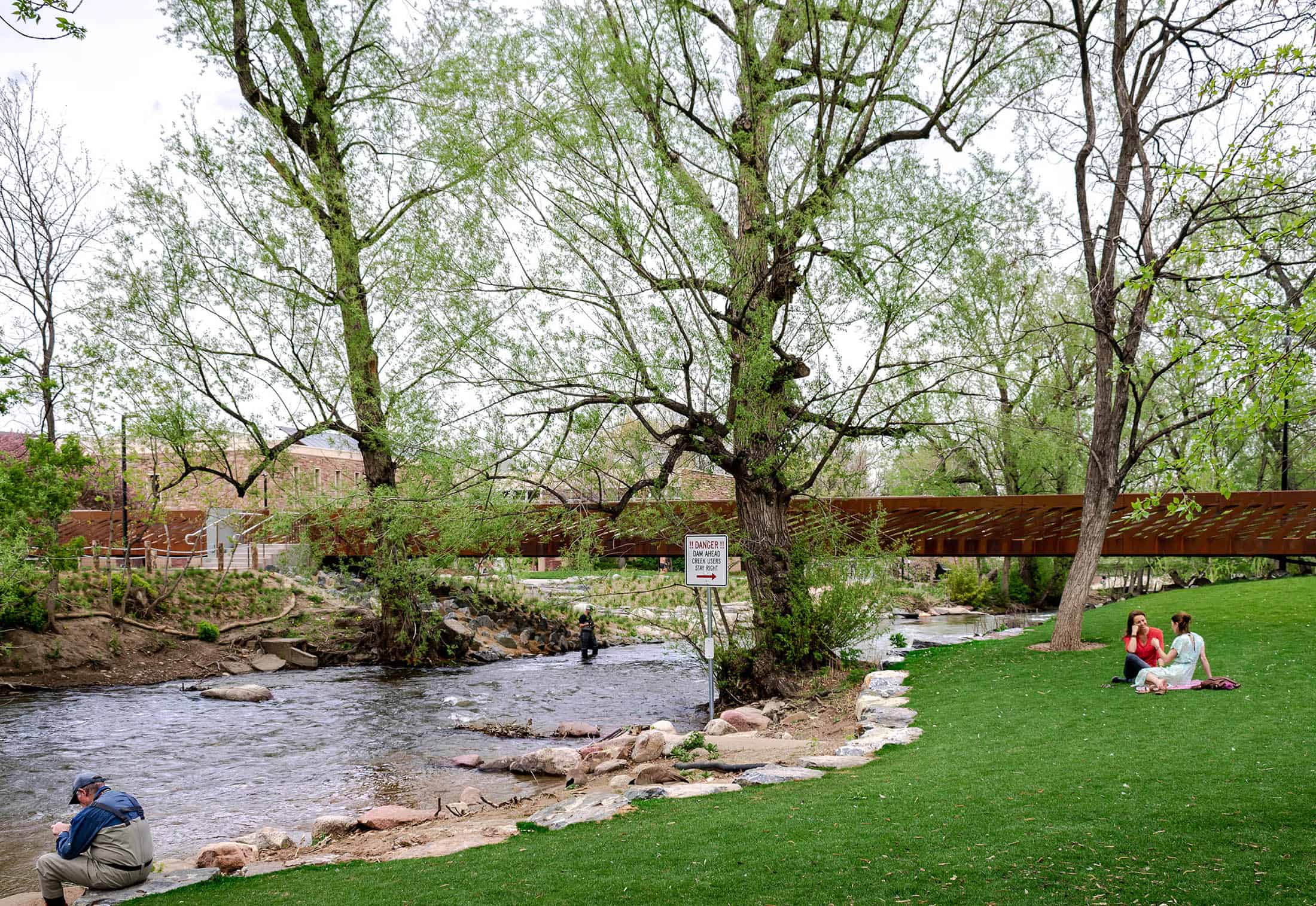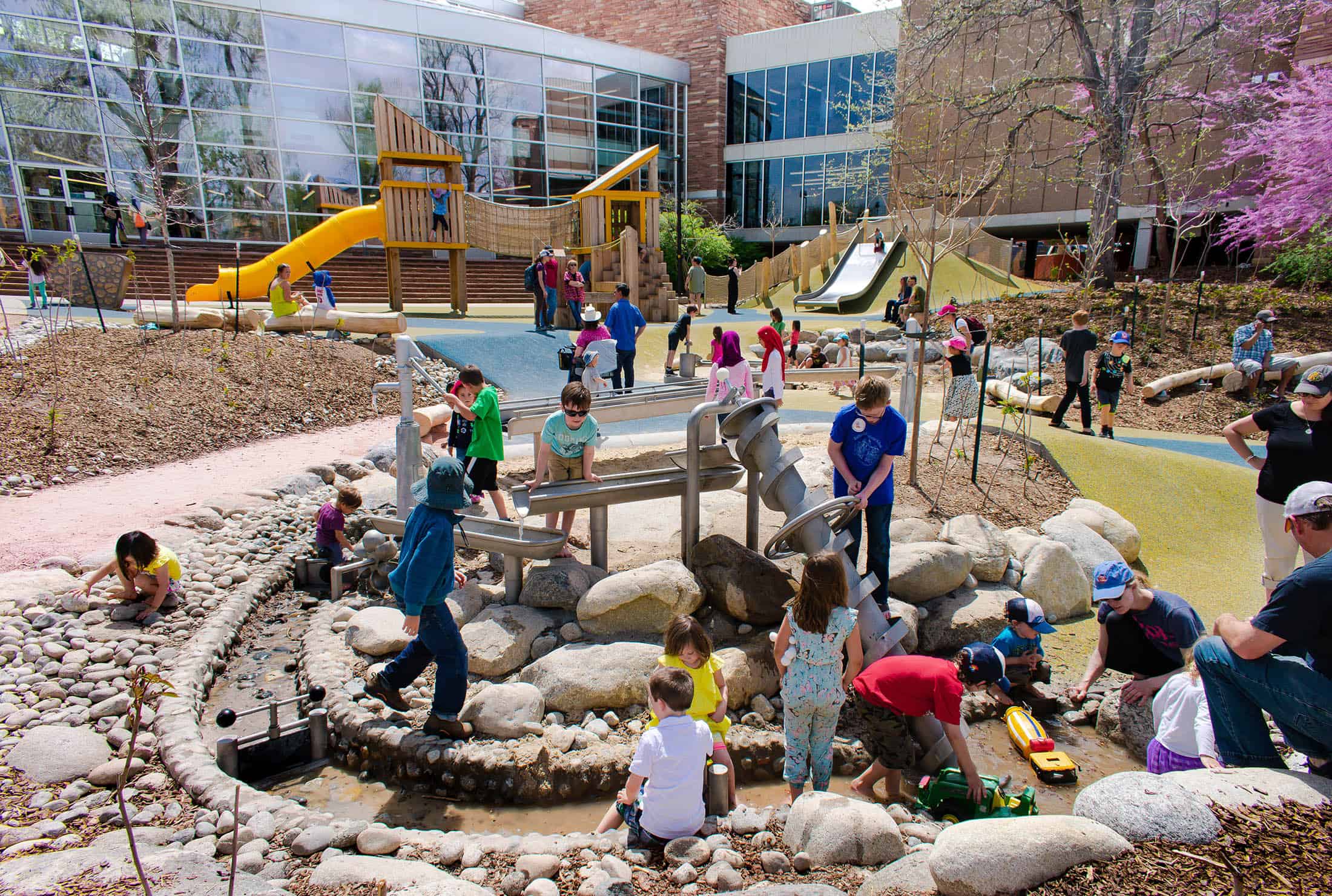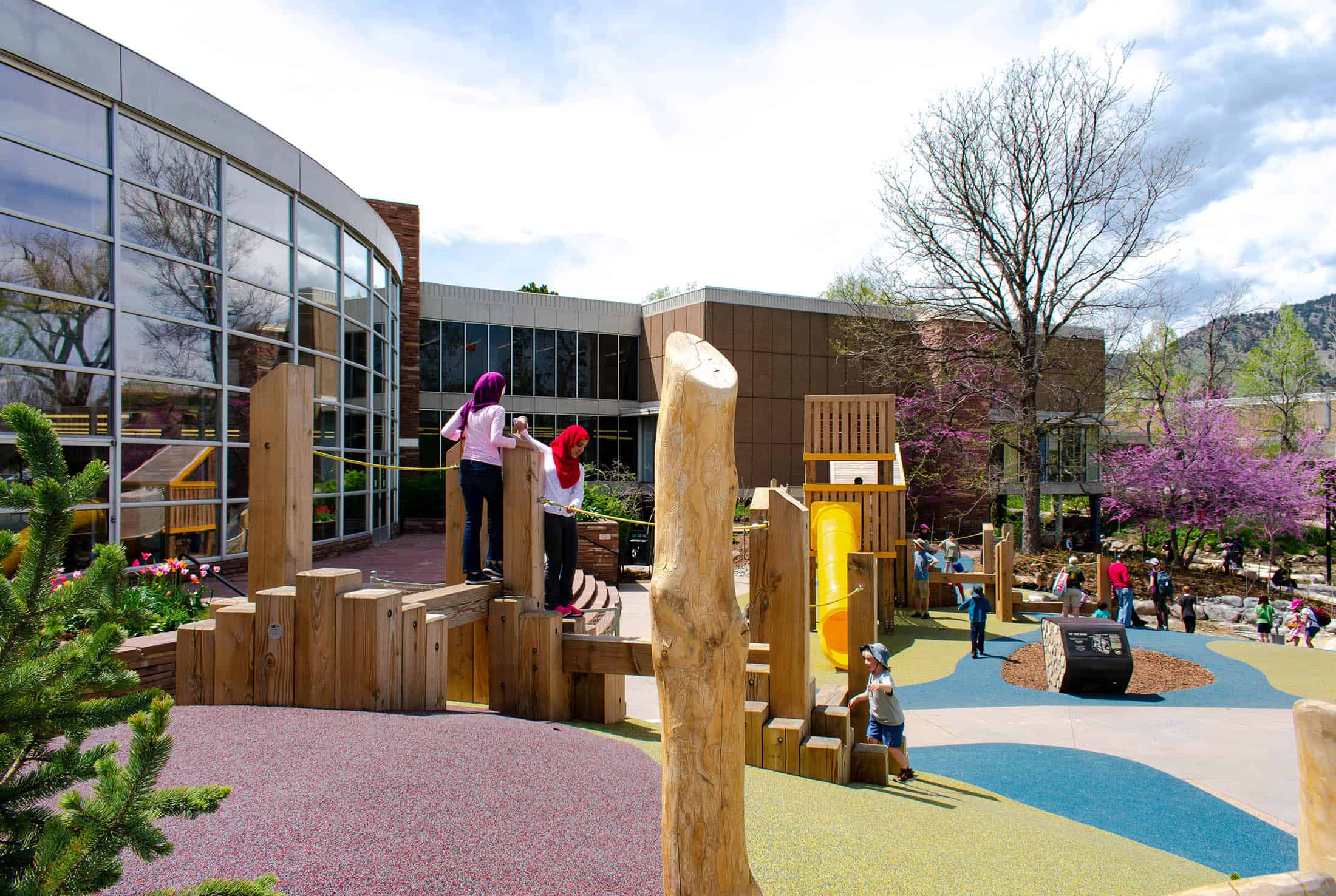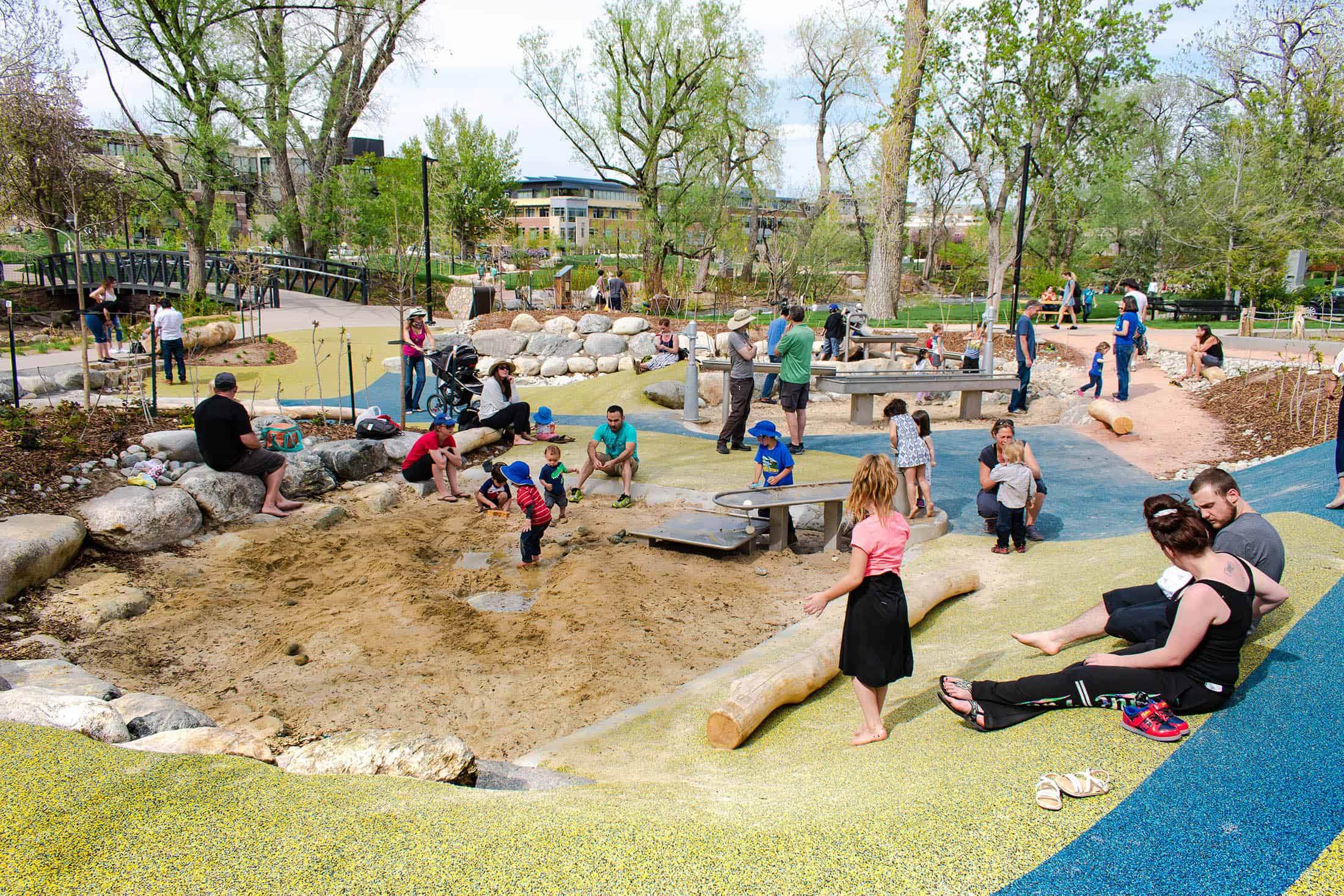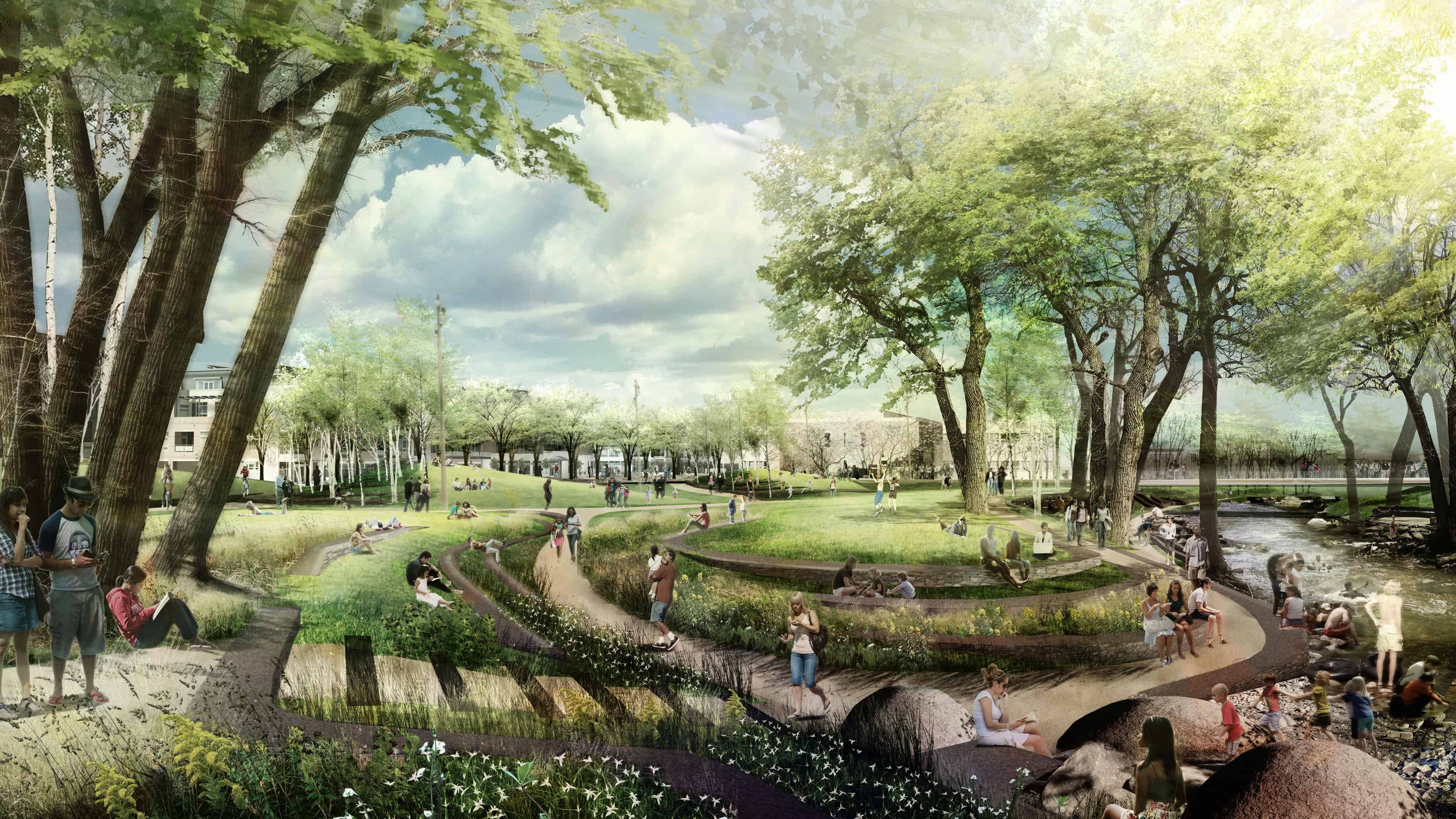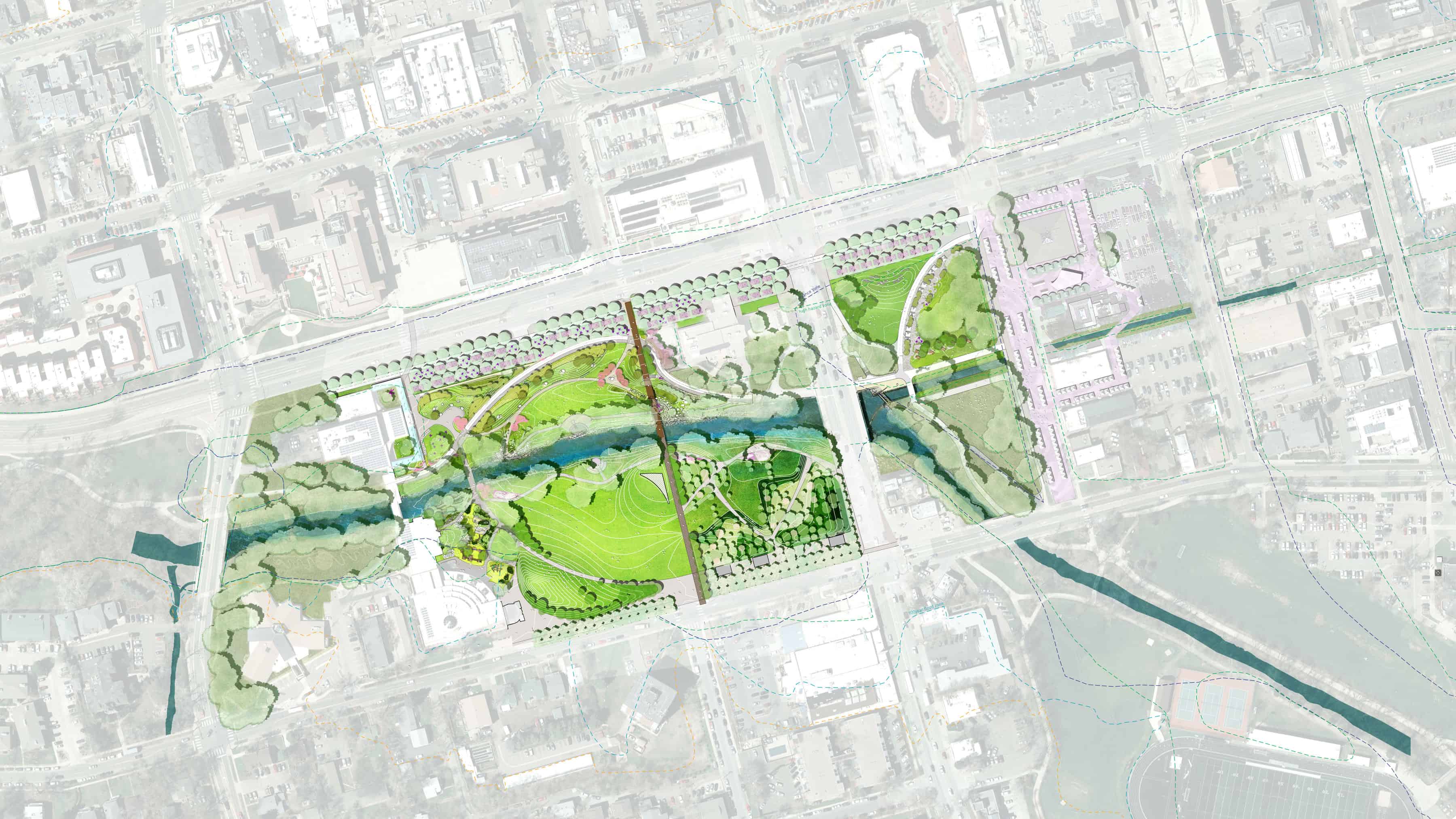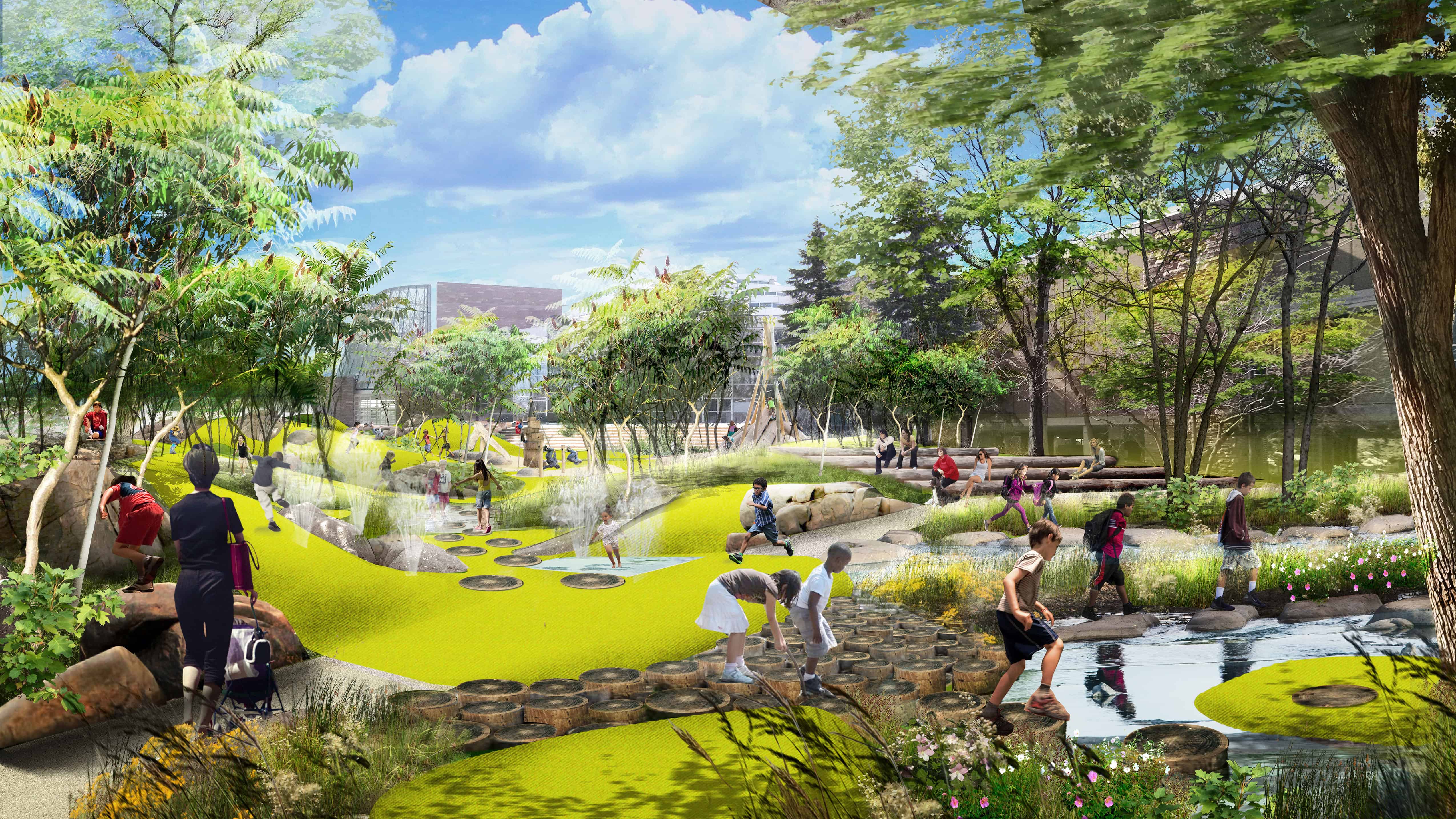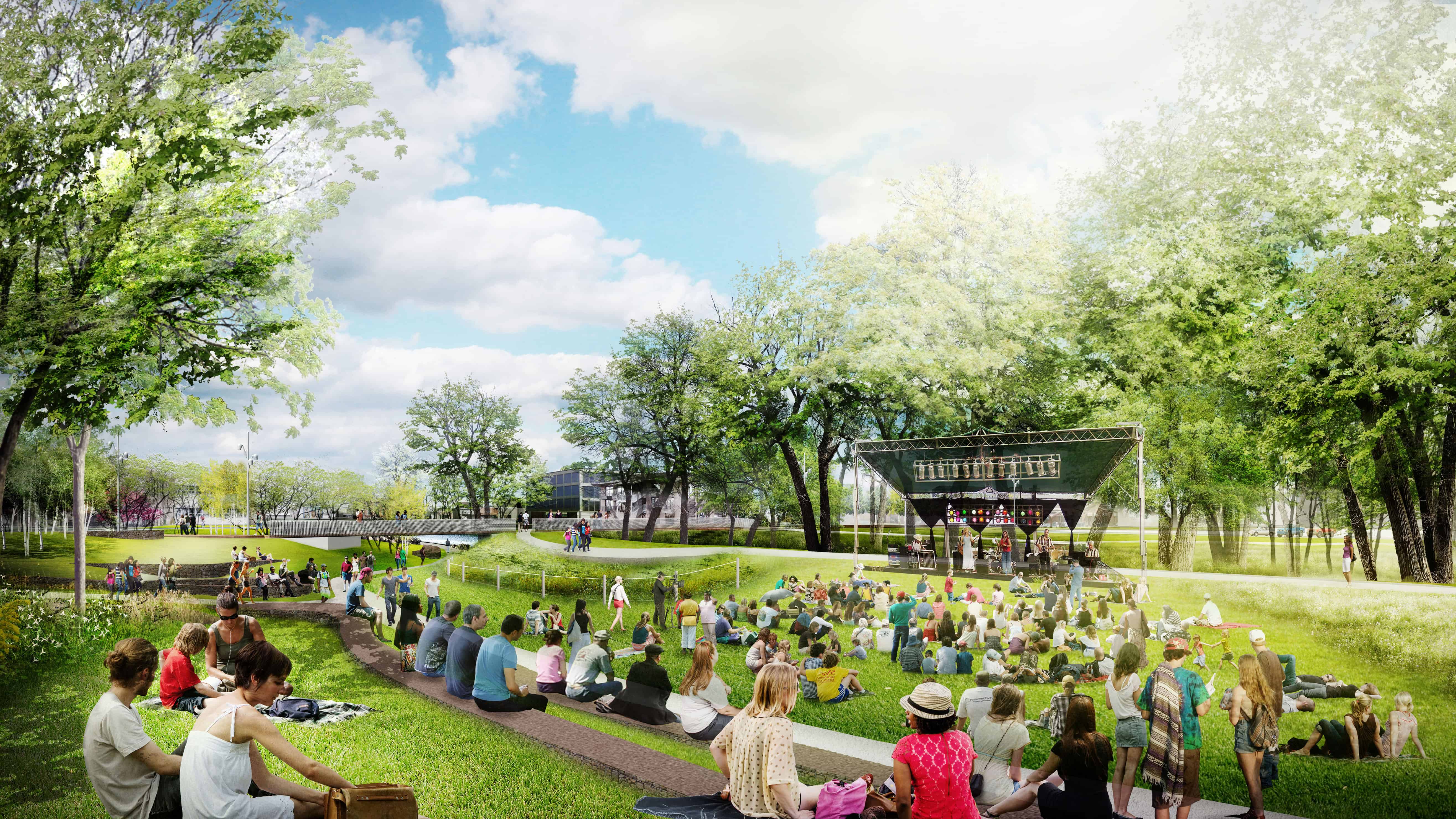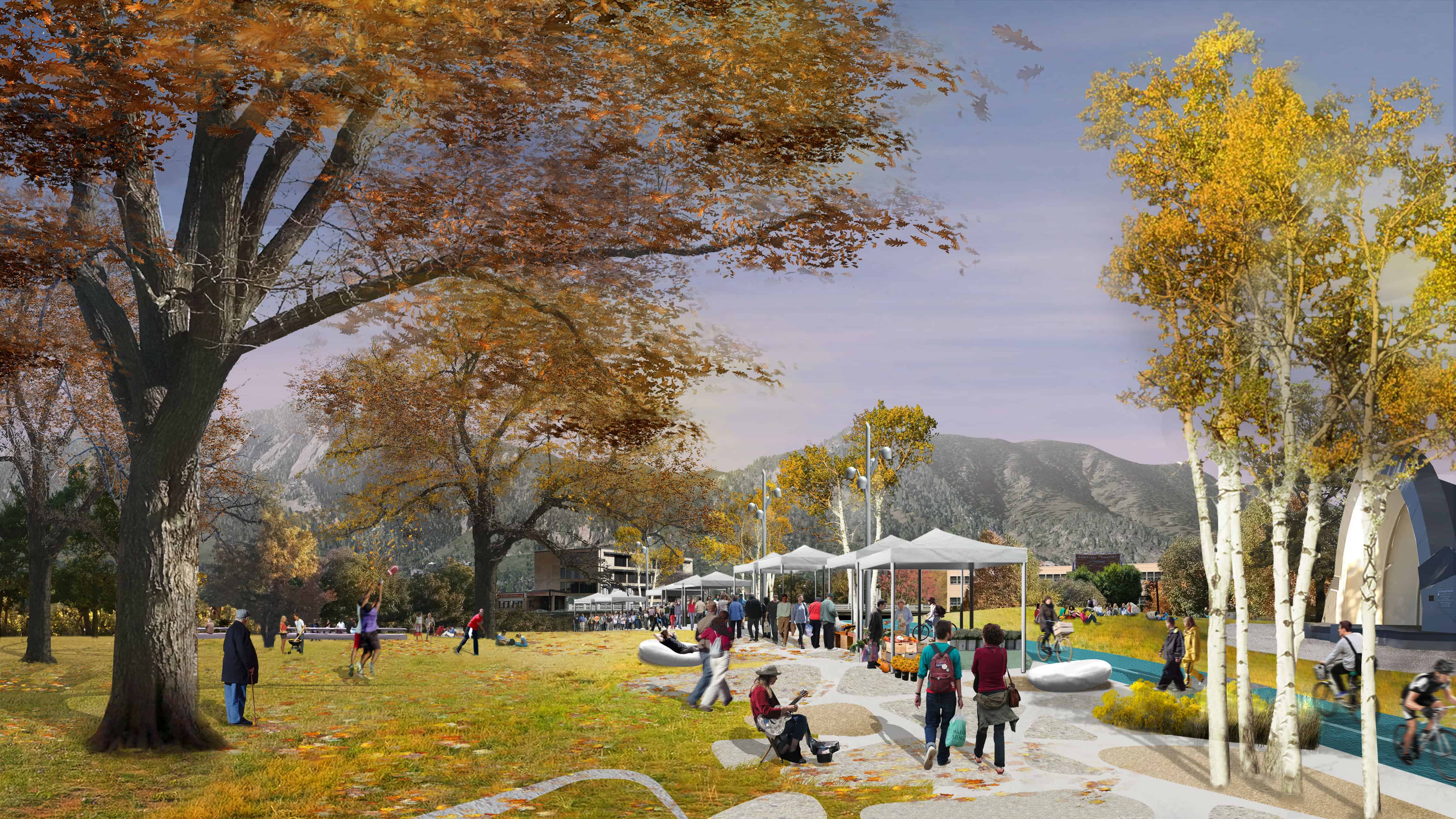Boulder’s Civic Area will be the heart of Boulder with nature at its core, flanked by bookends of civic, cultural, and commercial buildings that are alive with activity, collaboration, and innovation at the east and west. It will be a place for everyone – a lively and distinct destination that reflects our community’s values, where people of all ages, abilities, backgrounds, and incomes feel welcome to recreate, socialize, deliberate, learn, and access city services. The green space along Boulder Creek will provide significant open space and will be the unifying design that weaves existing and new facilities with a rich diversity of civic, commercial, recreational, artistic, cultural, and educational amenities and programs. The Civic Area also will continue to be a service center for Boulder municipal government and a new center for innovation, where community members, officials, and partners can meet, interact, and innovate. All together, these elements create a true civic heart for the Boulder community, a place where the city’s past, present, and future are debated, celebrated, and realized.
With the passage of the 2A Community, Culture and Safety tax initiative in November 2014, and the City Council acceptance of the updated Civic Area Master Plan, a Civic Area Park Development Plan is being developed to implement the phase I improvements – slated for construction in 2016-2017. The Civic Area Park Development Plan combines all the elements supported by the community and City Council such as a promenade along Canyon, 11th Street “spine,” creek terraces, nature play, improved creek path, plaza spaces and an enhanced Farmers’ Market. The Civic Area Park Development Plan is located within the 100-year floodplain, and much of the land lies within the High Hazard Zone (HHZ) and Conveyance Zone. The plan will meet or exceed existing flood standards, including avoiding placing new structures and parking in the HHZ and will be proactive about planning for and educating about floods. Topography in particular is carefully design to provide a no rise condition, while enhancing the experience and safety of the community. The park will provide a new urban experience of the creek with re-interpreted landscape akin to what Frederick Law Olmsted Jr. described in his 1910 report as the “washes” of Boulder creek.


